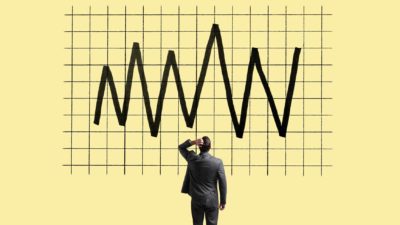For reasons that I can't now recall, I looked up Harley-Davidson's share price the other day.
(I don't think it's a midlife crisis. Then again, a Harley would be cool… But, I digress.)
The company, listed on the New York Stock Exchange, is currently trading on a price-to-earnings ratio of 6.2. That's… low.
Either it has a tough future ahead of it, or the market is being unduly pessimistic.
Which… is interesting, but not why I'm writing this.
Indeed, the company itself is only tangential to the point I want to make.
What interested me more was the company's past share price performance.
And not for the reason you might think.
See, Harley's shares have doubled.
But also, they're down 35%.
They're also up 16%.
And down by 28%.
Huh?
Which one is it, Phillips?
Well, it's all of them.
At the time of writing, Harley's shares are changing hands for US$30.50 (the rest of the numbers will be in US dollars, too).
5 years ago, they were $42.29. So they've fallen 28%.
In April 2020, they were $15.04 – a handy double in 3.5 years.
A year ago? $47.06, so they're off by 35% since then.
And merely 30 days ago, shares changed hands for $26.17, so investors have made 16% in a month.
Which would just be normal share market volatility (albeit with some significant macro causes), and needn't worry the long-term investor.
Except?
Except when you see an article about Harley-Davidson, it's likely to pick one of those time periods to tell you 'how the stock is doing'.
Or, more unhelpfully, they might even say it tells you how the 'company' is going.
So, how is the company going? The share price can't tell you that. It can only tell you what other people think.
And how is the share price going?
It depends.
It's going badly. And well. And badly. And well. It all depends on which time period you choose.
Which… makes the whole exercise pretty bloody silly, doesn't it?
But also, even if those four time periods were all going in the same direction, it wouldn't be any more helpful.
Enron's shares went up, and up, and up… and then the company went broke, and was exposed as a fraud.
AMP Ltd (ASX: AMP)'s went down, and down, and down… and has kept going down!
Tesla went nowhere, for five years. Then went to the moon.
You get the idea.
Unfortunately, the past is just that: the past.
Sure, a company's past performance might give us a starting point. But it might not.
Some go from strength to strength. Others… go from strength to strength, then go broke (I'm looking at you, Kodak.)
The bottom line?
Whether we're looking at a company or its share price, the past is no more than context.
At best!
What matters in investing are two things:
1. Your best guess of a company's future performance as an operating business; and
2. The price you pay, relative to that expectation
Not charts. Not past share price performance.
And certainly not 'how the share price has been going' conversation.
One last example:
Microsoft is one of the biggest and best companies on the planet.
Its shares were trading at $56 in early 2000, in the wake of the dot.com boom.
Then they fell. Hard.
They took 15 years to get back to those heady levels.
And now?
They're trading for $377 a piece.
Was 'the company' doing badly while the share price languished in the noughties and early teens?
Did that mean old Mr Softy was destined to languish in misery?
Or did it actually reflect not poor performance but just that investors, in the dim, distant past, had become crazily over-optimistic?
Yep. The latter.
A company's future – and its future share price – don't depend on how much investors paid for those shares at some time in the past.
If a share price performance is 'disappointing', that usually means that people paid too much in the past, or are paying too little now.
If it's 'impressive', then the reverse is probably true – that the past price was too low, or today's is too rich.
You can't answer either question by looking at a graph of daily share prices.
Whether a company is worth buying, right now, can only be assessed by, as I said above, an analysis of its prospects and its current price.
Harley-Davidson is a helluva brand. People tattoo that brand on their bodies… not something you can say for Woolworths Group Ltd (ASX: WOW), Bega Cheese Ltd (ASX: BGA) or IBM.
That's a pretty good start. But whether it's enough to make for a successful investment depends on its ability to continue to get people to pay good money for something they value highly.
Not whether the share price is down — or up — over the past 12 months… or 12 years.
As an investor, your job is to work out what data points are worth listening to, and which are just parlour games.
Don't get caught up in looking at the wrong things.
Now… about that Harley…
Fool on!









